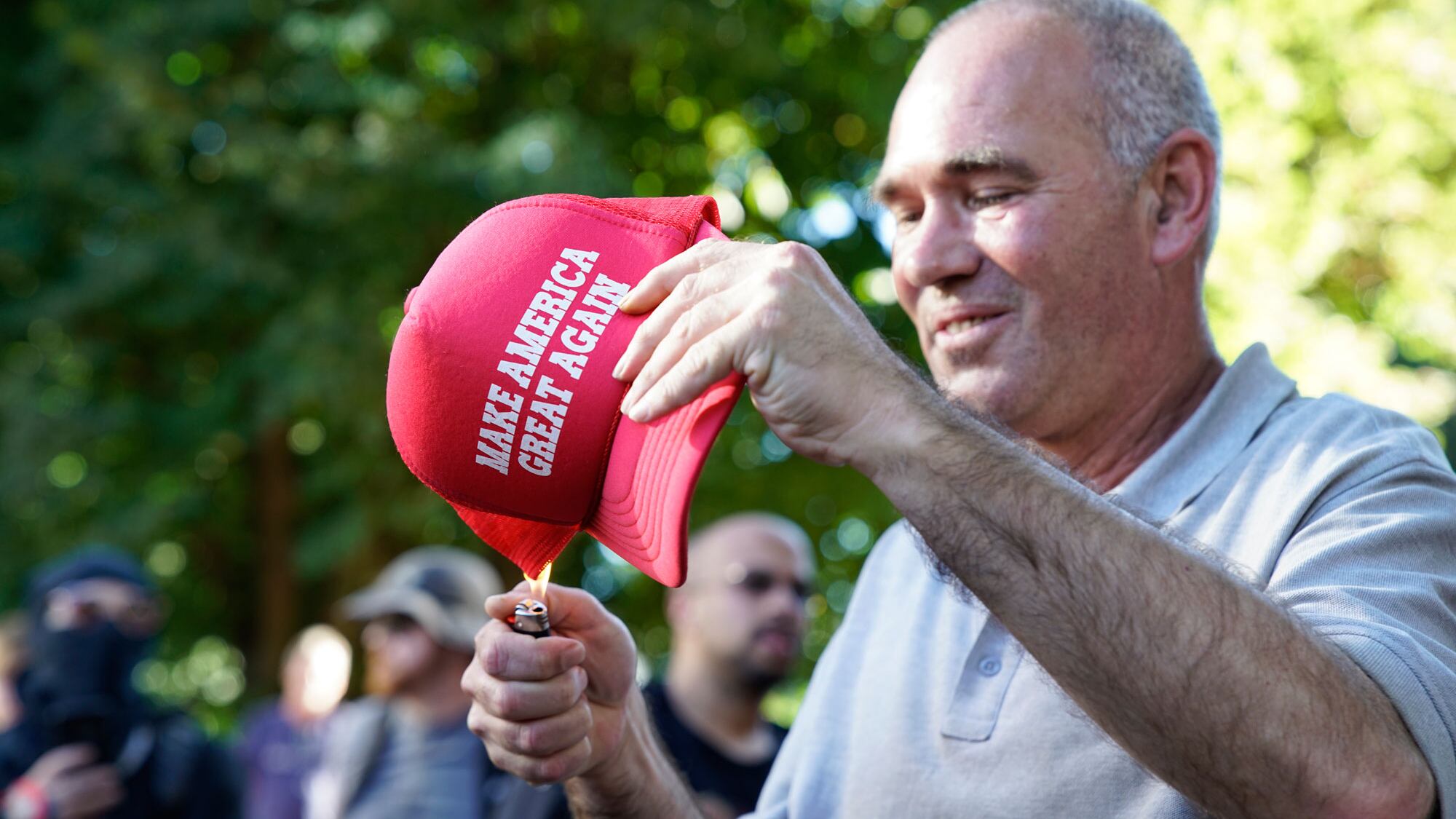What happened: Eight days after the MAX stabbings, Portlanders stood united against a movement that thrived on hate.
For months prior to the May 26 killings, an American fascist movement grew in the Northwest. Members of the "alt-right"—a loose coalition of Trump-supporting nationalists, internet provocateurs and white supremacists—had been organizing rallies and marches across Portland and its suburbs.
Those protests often attracted opponents in the form of masked antifascist activists, or Antifa. By May, Portland rivaled Berkeley, Calif., as the most politically violent city in the U.S.

In the wake of the MAX slayings, the alt-right called for its biggest rally yet, a "free speech" protest scheduled for June 4.
While the event was attended by alt-right fans and their masked Antifa foes, the demonstration, for the first time, was overwhelmed by a thousand everyday Portlanders, who surrounded the park where a few hundred right-wing protesters gathered. "Nazis, go home!" the crowd shouted.

Why it mattered: The scale of the defiance punctured the aura of menace that the alt-right had cultivated. It showed that free speech was a two-way street: Come into Portland breathing hate, and citizens would have something to say about it.
One of the out-of-town alt-right protesters, a Los Angeles man named John Turano, who dressed in a Roman centurion's helmet with red, white and blue plumes in the crest, said questions asked of him by Portlanders made him abandon the nationalist movement.
"It just made me feel bad," Turano told the Portland State University Vanguard in July. "I hadn't really been paying attention; I just thought we were surrounded by all these people who hated us. But I met some people that seemed so nice."

Alexander Reid Ross, a PSU instructor who studies antifascist movements, says ordinary citizens turning out to protest was a turning point.
"Confronting them," he says, "has been successful."
Correction: This item originally misstated the date as June 3.
